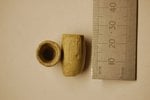Stephen Best
Recruit
- 3
- Oct 22, 2012
This should be an easy one for the experts amongst you - I have been given a couple of 'bullets' to identify, they are 15mm dia, 25.5mm long with a 9mm hollow at the cartridge end, weigh 31g and are lead. They were found deep in the ground, close together. It's a long shot - literally - but there was an air raid on the local railway station here in Castle Cary, Somerset, on September 3rd 1942. Four 500kg bombs were dropped causing a fair bit of damage, and there were reports of strafing and 10 injured, three dead. The bullets were unearthed during gas mains laying, only 1/2 mile or so from the station. Could they possibly be technically linked to German aircraft that were capable of delivering 500 kg bombs ? Looking forward to learning loads !!


